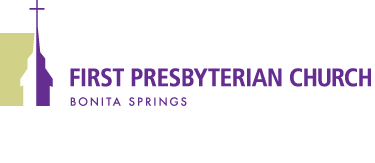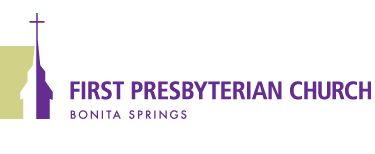This fall, I will conclude my second year in the leading Change Cohort at Fuller Theological Seminary. Following the coursework on campus in Pasadena in June, July through November are structured to enable the student to synthesize the concepts through project work. This year has focused on the leader’s own transformation as a catalyst for change in the church. Our mantra has been, “If you want to unstick a church, you have to unstick the pastor.” As I write this article, I am actively writing my fall project which is an assessment of how the values and practices of family history affect the values and practices that shape a leader’s ministry.
To that end, I began my project work by interviewing my parents about their memories of their own families in order to create a genogram that visually displays patterns of family systems over several generations. A genogram is similar to a family tree but with more detail regarding relational dynamics.
During the interview with my mother, I learned that she grew up in a home where there was no faith background. As a child in the ’60s, on her own volition she would walk to the local neighborhood church. Through this experience, God found her, and she came to understand the hope that is ours in Jesus Christ. My father, on the other hand, grew up in a Christian home attending Westminster Presbyterian Church in Cedar Rapids, Iowa, where his father sang in the choir for over 50 years and where, to this day, there is a grand piano dedicated in my grandmother’s name.
When my parents married, they were intentional in allowing Christ to become the center of their marriage. When my sister and I were born, they intentionally raised us with Christ as the center of our home. In late middle school and high school, my parents taught a class called Growing Kids God’s Way which focused on raising kids in Christ-centered homes, as opposed to child-centered homes.
As I spent time mapping my family tree through the genogram, the patterns leapt off the page. On the periphery of our family tree, some branches have been cut off. Other branches are dry, leafless, cracked and withered. However, when God engrafted my parents into the body of Christ, that section of the family tree began to grow some new, green branches with fresh vibrant buds and leaves. What became clear is how God had redeemed my immediate family system through His faithfulness to my parents through whom new life began to emerge.
In the book of Deuteronomy, the Israelites stood on the banks of the Jordan River longing to enter the Promised land. Moses had been told by God that he would not enter the land with his people. As Moses prepared to conclude his earthly ministry, his primary concern was passing on the legacy of the faith so that the blessing of living under God’s covenant would become reality for his people. As his last will and testament, he said:
These are the commands, decrees and laws the lord your God directed me to teach you to observe in the land that you are crossing the Jordan to possess, so that you, your children and their children after them may fear the Lord your God as long as you live by keeping all his decrees and commands that I give you, and so that you may enjoy long life… impress them on your children. (Deuteronomy 6, selected verses, emphasis added)
Moses had a three-generational mindset for passing on the legacy of faith. His hope was that the generation that took hold of the promised land, their children and their grandchildren after them would remain faithful to the terms and conditions of God’s covenant so that they might experience the blessings of God. For this reason, he encouraged the people to impress, to stamp upon them, the covenantal promises of God.
Perhaps the most underrated part of our faith in Jesus Christ is the blessing that comes from being transformed by His grace. When a new life of righteousness emerges by grace through faith, the blessing we experience is the absence of some of the avoidable pitfalls of a life. Certainly, all of us have our share of unavoidable pain and suffering, but a righteous life in Christ can create an environment of blessing in relationship with God and in relationship with one another. This is what
I have observed in my own family tree. New life emerged in Christ for my parents which was passed down to my sister and
me and which is now being passed down to my children— three generations!
Blessed is the one who does not walk in step with the wicked… that person is like a tree planted by streams of water, which yields its fruit in season and whose leaf does not wither—whatever they do prospers. (Psalm 1:1, 3)
The late Billy Graham said, “The greatest legacy one can pass on to one’s children and grandchildren is not money or other material things accumulated in one’s life, but rather a legacy of character and faith.” My life is a witness to the veracity of that statement.
I am realizing that if we want to “un-stick” a family, we have to “un-stick” the parents and the grandparents. When parents are transformed by Christ and the legacy of faith is transferred, the tree stays green and healthy. When the legacy ceases to be impressed on our families, the tree becomes dry and leafless… and, well, sticks. We need to “un-stick” our legacy as parents and grandparents.
How are things with your family tree? Does Charlie Brown’s Christmas tree come to mind? Jesus said, “I am the vine; you are the branches. If you remain in me and I in you, you will bear much fruit” (John 15:5). That generational legacy transfer begins with your connection to Christ. Your “unsticking” might prevent your family tree from becoming sticks. It is through the ongoing transformation of the Spirit of God in you that this legacy of faith can begin to enable new branches and shoots to form in A genogram pronounced: jen-uh-gram) your family tree.
by Pastor Brad Rogers
“It is through the ongoing transformation of the Spirit of God in you that this legacy of faith can begin to enable new branches and shoots to form in your family tree.”
A genogram (pronounced: jen-uh-gram) your family tree. is a graphic representation of a family tree that displays detailed data on relationships among individuals. It goes beyond a traditional family tree by allowing the user to analyze hereditary patterns and psychological factors that punctuate relationships. The family systems theory states that a family functions as a system wherein each member plays a specific role and must follow certain rules. Based on the roles within the system, people are expected to interact with and respond to one another in a certain way. Five key concepts involved within a family system are: emotional triangles, differentiation of self, projection, emotional cutoff, and multigenerational transmission process.





